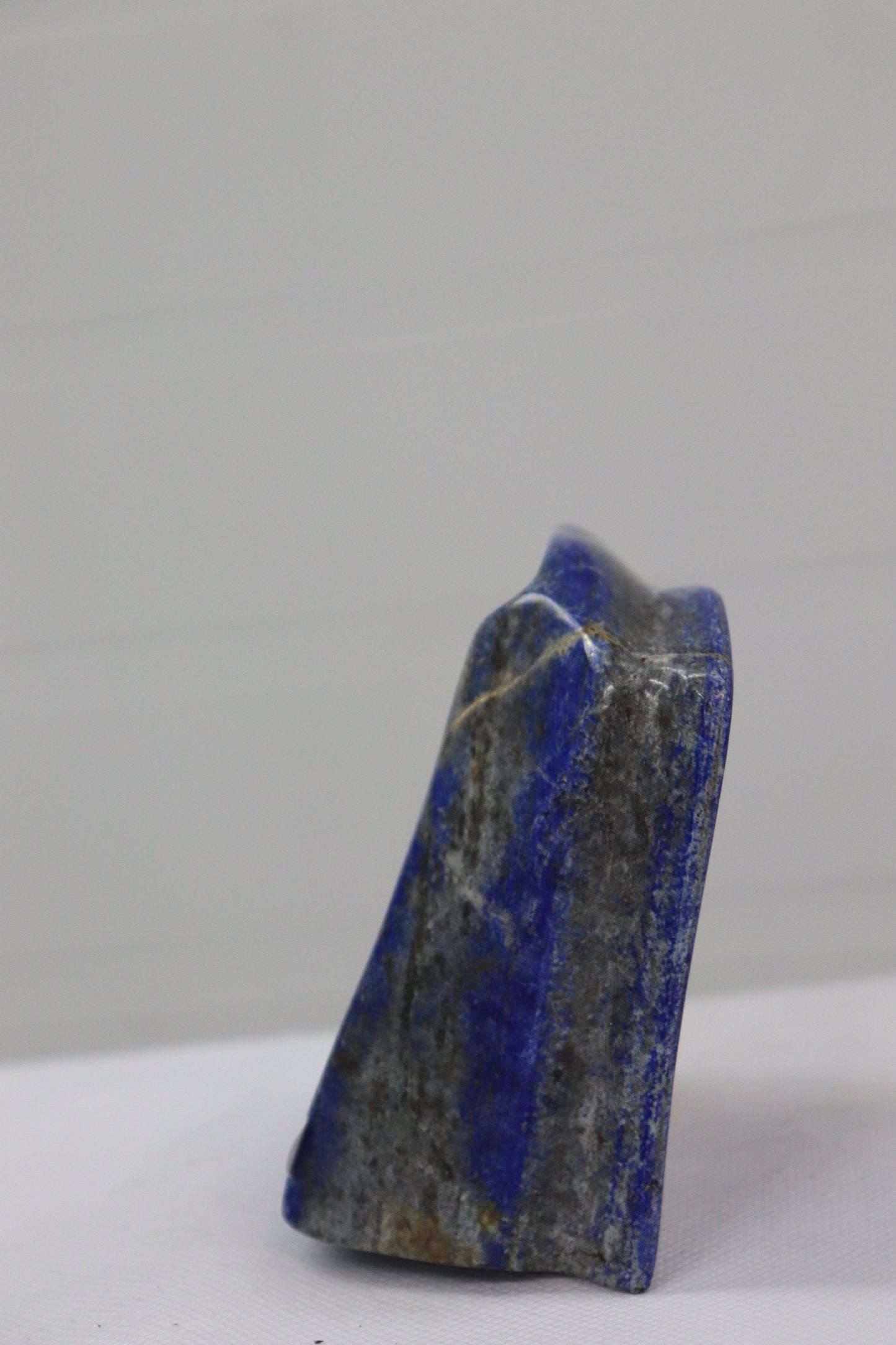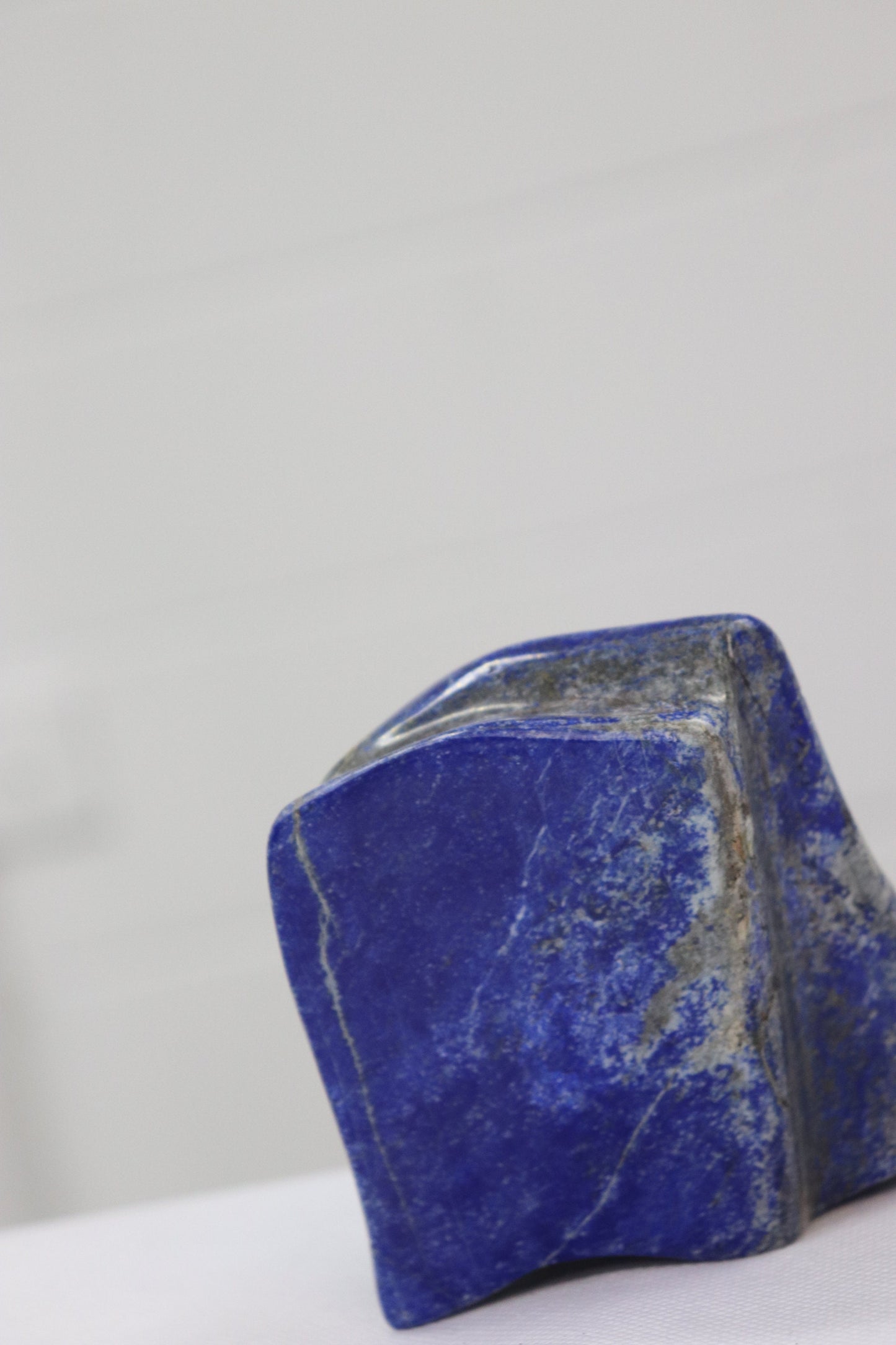1
/
of
5
Distinction Crystals
17) lapis lazuli Natural Blue Gemstone Crystal Fools Gold Pyrite Afghanistan
17) lapis lazuli Natural Blue Gemstone Crystal Fools Gold Pyrite Afghanistan
Regular price
£39.00 GBP
Regular price
Sale price
£39.00 GBP
Unit price
/
per
Shipping calculated at checkout.
Couldn't load pickup availability
lapis lazuliNatural Free form Lapis Lazuli
Size : 10 x 5 x 4.5 cm approxWeight : 565 grams approxLocation : Afghanistan You will receive the exact piece picturedLapis Lazuli : is one of the most sought after stones in use since man's history began. Its deep, celestial blue remains the symbol of royalty and honour, gods and power, spirit and vision. It is a universal symbol of wisdom and truth.In ancient Persia and pre-Columbian America, Lapis Lazuli was a symbol of the starry night, and a favorite stone of the Islamic Orient for protection from the evil eye. At the end of the Middle Ages, lapis lazuli began to be exported to Europe, where it was ground into powder and made into ultramarine, the finest and most expensive of all blue pigments. It was used by some of the most important artists of the Renaissance and Baroque, including Masaccio, Perugino, Titian and Vermeer, and was often reserved for the clothing of the central figures of their paintings, especially the Virgin Mary.Today mines in northeast Afghanistan and Pakistan are still the major source of lapis lazuli. Important amounts are also produced from mines west of Lake Baikal in Russia, and in the Andes mountains in Chile. Smaller quantities are mined in Italy, Mongolia, the United States and Canada.Lapis lazuli is a rock whose most important mineral component is lazurite[9] (25% to 40%), a feldspathoid silicate mineral with the formula (Na,Ca)8(AlSiO4)6(S,SO4,Cl)1-2.[10] Most lapis lazuli also contains calcite (white), sodalite (blue), and pyrite (metallic yellow). Other possible constituents: augite; diopside; enstatite; mica; hauynite; hornblende, and nosean. Some lapis lazuli contains trace amounts of the sulfur-rich löllingite variety geyerite.Lapis lazuli usually occurs in crystalline marble as a result of contact metamorphism.
View full details
Size : 10 x 5 x 4.5 cm approxWeight : 565 grams approxLocation : Afghanistan You will receive the exact piece picturedLapis Lazuli : is one of the most sought after stones in use since man's history began. Its deep, celestial blue remains the symbol of royalty and honour, gods and power, spirit and vision. It is a universal symbol of wisdom and truth.In ancient Persia and pre-Columbian America, Lapis Lazuli was a symbol of the starry night, and a favorite stone of the Islamic Orient for protection from the evil eye. At the end of the Middle Ages, lapis lazuli began to be exported to Europe, where it was ground into powder and made into ultramarine, the finest and most expensive of all blue pigments. It was used by some of the most important artists of the Renaissance and Baroque, including Masaccio, Perugino, Titian and Vermeer, and was often reserved for the clothing of the central figures of their paintings, especially the Virgin Mary.Today mines in northeast Afghanistan and Pakistan are still the major source of lapis lazuli. Important amounts are also produced from mines west of Lake Baikal in Russia, and in the Andes mountains in Chile. Smaller quantities are mined in Italy, Mongolia, the United States and Canada.Lapis lazuli is a rock whose most important mineral component is lazurite[9] (25% to 40%), a feldspathoid silicate mineral with the formula (Na,Ca)8(AlSiO4)6(S,SO4,Cl)1-2.[10] Most lapis lazuli also contains calcite (white), sodalite (blue), and pyrite (metallic yellow). Other possible constituents: augite; diopside; enstatite; mica; hauynite; hornblende, and nosean. Some lapis lazuli contains trace amounts of the sulfur-rich löllingite variety geyerite.Lapis lazuli usually occurs in crystalline marble as a result of contact metamorphism.










